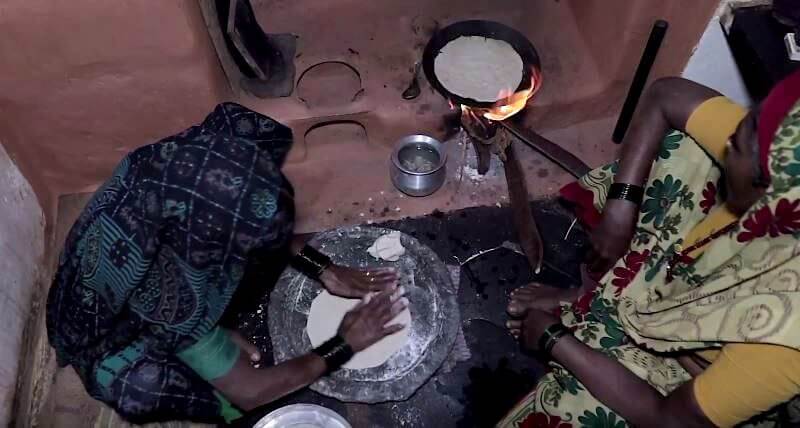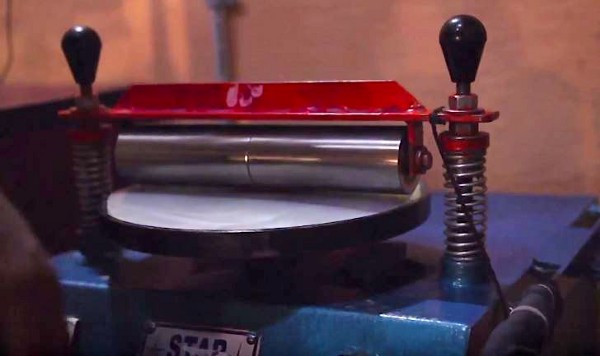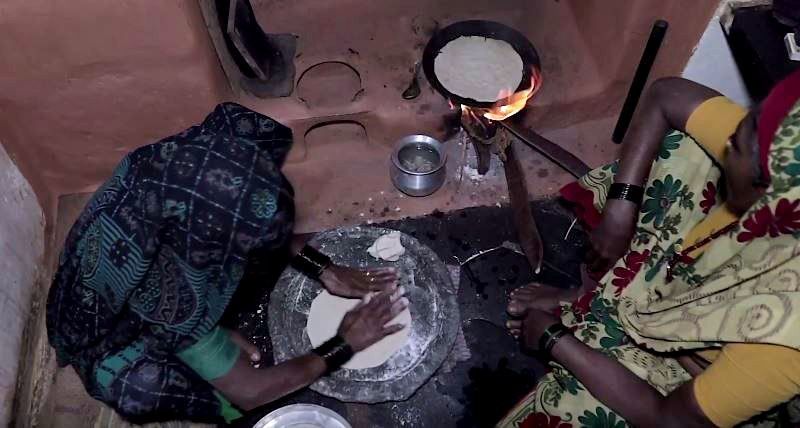Clear linkages exist between distributed energy, energy efficiency and sustainable livelihoods. However, a holistic solution needs to go beyond the confines of technology, and integrate aspects of capacity building, appropriate financing and market intelligence. Take the case of roti.
Roti is the bread of India, ubiquitous in every corner of the country. Making and supplying it often falls to rural women, who toil away in dark, unhygienic rooms at home, flattening the dough by hand against hard stone. There is little awareness of the roti-rolling machines on the market, and little possibility of being able to run them reliably due to unscheduled power outages.

Traditional method of making roti at home (Photo: SELCO Foundation)
The ingredients for tripling roti production
Sumangala Patil, a home maker in Narendra village in South India, started a business of making roti by hand and delivering them to nearby households and dhabas (roadside restaurants). Three years ago she started using a roti-rolling machine. Owing to erratic power, her production was limited to 150 roti per day. In fact, Sumangala was forced to turn down orders, fearing she wouldn’t be able to fulfil them due to unreliable power supply.
But then Sumangala was identified as an entrepreneur eligible for market linkage training by Best Practices Foundation (BPF), who reached out to SELCO Foundation to see if solar back-up power would improve her business. Solar powering her inefficient AC machine would be expensive, because of the need to add an inverter. SELCO worked with a local equipment manufacturer to retrofit the machine with an efficient DC motor, which was then solar-powered to provide adequate working hours for Sumangala’s business.

Close up of a roti rolling machine (Photo: SELCO Foundation)
With the technology upgrade and sustainable energy, she now makes close to 450-500 rotis per day, doubling her income. She financed the upgrade through a loan from Syndicate Bank, under their Synd Mahila Shakti scheme. In fact, a number of other rural and commercial banks in India have come forward to finance such projects under the Mudra scheme for small businesses. Bihar Gramin Bank, Canara Bank (Manipur) and others have even set targets to finance rural entrepreneurs who need decentralized energy solutions.
What does it take to have a sustainable business?
First is to have an energy efficient machine with a reliable electricity supply. Inefficient loads significantly increase the cost of sustainable energy back-up.
Second, the entrepreneur must understand the business and projected cashflows, and this is where capacity building NGOs are critical. Seeking an appropriate loan that matches the cashflow is what will make the business a sustainable proposition.
And finally, linkage to the market. If Sumangala Patil had bought the machine that makes 500 rotis per day, but the local restaurants needed only 200, her business model would have failed. Entrepreneurs need to have access to an adequate market to sell their products.
The roti economy is a microcosm of what is possible for rural India as whole, and a great case study for women empowerment. There are more than 25 such roti-rolling entrepreneurs now who are benefiting from this intervention. Similarly, tailors, blacksmiths, dairy farmers, and many other rural entrepreneurs are now using decentralized energy to improve their livelihoods.
However, mere solar powering of machines cannot generate and sustain these livelihoods. A close collaboration between the entrepreneurs, energy enterprises, financial institutions and capacity building organizations can bring about holistic, sustainable solutions.
Vivek Shastry works with the Policy and Planning Group at SELCO Foundation. He focuses on energy planning, ecosystem development, and energy-healthcare nexus.
